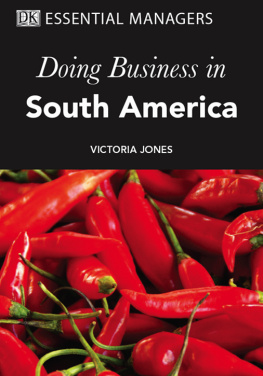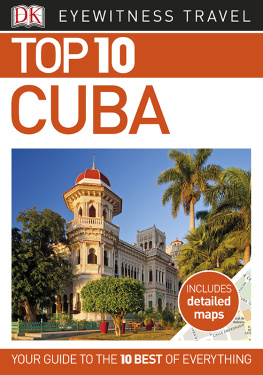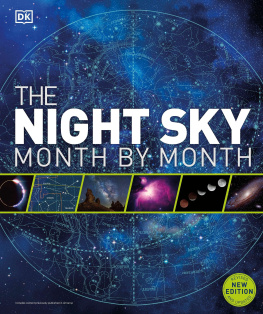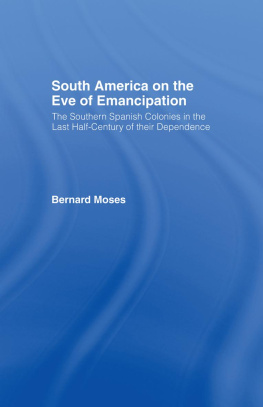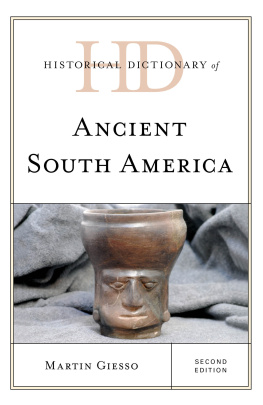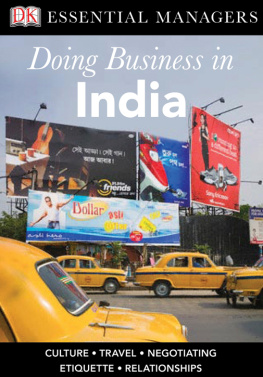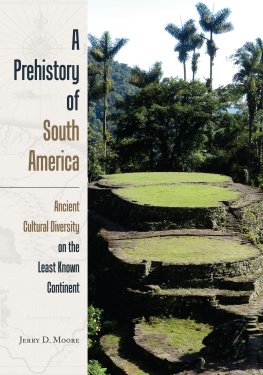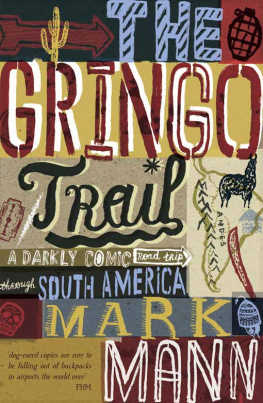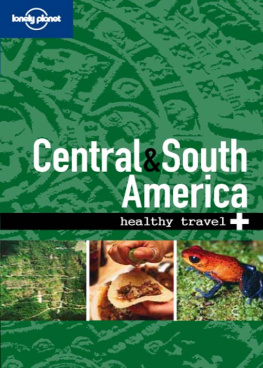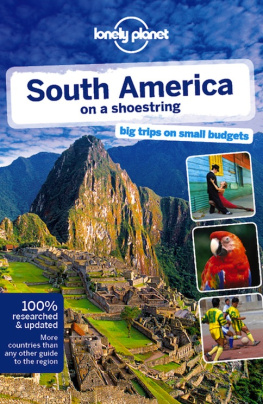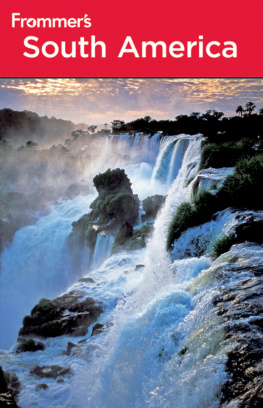DK - Doing Business in South America
Here you can read online DK - Doing Business in South America full text of the book (entire story) in english for free. Download pdf and epub, get meaning, cover and reviews about this ebook. year: 2009, publisher: DK Publishing, genre: Business. Description of the work, (preface) as well as reviews are available. Best literature library LitArk.com created for fans of good reading and offers a wide selection of genres:
Romance novel
Science fiction
Adventure
Detective
Science
History
Home and family
Prose
Art
Politics
Computer
Non-fiction
Religion
Business
Children
Humor
Choose a favorite category and find really read worthwhile books. Enjoy immersion in the world of imagination, feel the emotions of the characters or learn something new for yourself, make an fascinating discovery.
Doing Business in South America: summary, description and annotation
We offer to read an annotation, description, summary or preface (depends on what the author of the book "Doing Business in South America" wrote himself). If you haven't found the necessary information about the book — write in the comments, we will try to find it.
DK: author's other books
Who wrote Doing Business in South America? Find out the surname, the name of the author of the book and a list of all author's works by series.
Doing Business in South America — read online for free the complete book (whole text) full work
Below is the text of the book, divided by pages. System saving the place of the last page read, allows you to conveniently read the book "Doing Business in South America" online for free, without having to search again every time where you left off. Put a bookmark, and you can go to the page where you finished reading at any time.
Font size:
Interval:
Bookmark:

80 Strand, London WC2R 0RL
LONDON, NEW YORK,
MUNICH, MELBOURNE, DELHI
London WC2R 0RL, England
Copyright 2008 Dorling Kindersley
Text Copyright 2008 Victoria Jones
Digital conversion by DK Digital Content, London and DK Digital Media, Delhi.
No part of this publication may be reproduced, stored in a retrieval system,
or transmitted in any form or by any means, electronic, mechanical, photocopying, recording, or otherwise, without the prior written permission of the copyright owner.
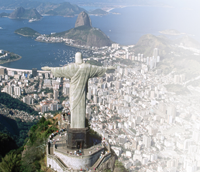
The continent that pulsates to the fiery music of samba, tango, cumbia, and candombe provides an exciting environment for business as well. South America today bursts with opportunities for import, export, manufacturing, services, and supply. The tumultuous politics of the past are steadily giving way to government policies aligned to the needs of international business. Large numbers of hardworking people are enjoying their entry into the middle class. Their productivity is transforming abundant natural resources into increased GDP and pushing demand for the consumer goods they crave.
Doing Business in South America gives you the information and perspectives you need to survive and succeed in this exciting market. It tells you about the business context including history, opportunities, laws, and customs. It takes the vast diversity of culture and focuses on the most important features a newcomer should understand in order to build strong relationships. And it offers plenty of practical pointers for getting established on the ground.
Business opportunities of all kindsfrom agriculture to software developmentare springing up all across this large and varied continent. The land and its people offer rich rewards to organizations prepared to undertake expansion to the region, and to learn its ways of doing business. A truly diverse global portfolio needs to include South America. And managers heading to South America need this content.
Business Profile
South America offers the turbo-charged growth of newly industrialized economies with the comfortable familiarity of European roots. You can understand this unique combination through the regions history, political trends, and business characteristics, which explain how 13 distinct nations share the continents geography, wealth, and potential.
South America is characterized by extremeslavish wealth and miserable poverty, dense urbanization and unexplored jungles, vast natural resources and innovative technological breakthroughs. To succeed in this region, managers must enter with an open mind and embrace the rich diversity.
South America comprises 12 countries and one overseas department that can be roughly divided into three groups by language. Portuguese-speaking Brazil makes up about half the continent in size and population. Nine countries make up the Spanish-speaking group of South America, matching Brazil with a population of about 200 million. In the third group, at the far north, languages vary: the half a million people of Suriname speak Dutch, the 800,000 people of Guyana speak English, and the 250,000 people of French Guiana are actually French citizens.
Besides indigenous peoples, South America is home to people from Africa, Asia, Europe, and the Middle East. More Japanese descendants live in Brazil than in any other place except Japan. The population density varies greatly. Each country of South America has sparsely populated expanses and one or two large population centers. Ecuador has the greatest population density with 138 people per square mile. Suriname, Guyana, and French Guiana have fewer than nine people per square mile.
The per capita GDP of South American nations ranges from $4,000 in Paraguay to $14,300 in Chile, but the contrasts between the wealthy and poor are among the greatest on Earth. Every country falls between 40 and 60 by the Gini coefficient, compared to the 20s and 30s in Europe. In human development, the countries are ranked between 40 (Chile) and 111 (Bolivia) among some 200 nations. In rural areas utilities such as electricity or paved roads may not be available. Yet the region produces automobiles and launches satellites.
 Geographical extremes
Geographical extremesThe regions geography and climate are another source of its diversity. The Amazon is the Earths largest rainforest and Atacama in southern Chile is the Earths driest desert. The Andes is the Earths longest mountain range. La Paz, Bolivia is the worlds highest capital city. Cape Horn, Chile is only 805 km (500 miles) from Antarctica, and average temperatures are at freezing point throughout the winter. In contrast, half the countries of the continent are on or above the equator. Natural resources are equally varied, supporting a wide range of business types. Some of the land is rich in mineral resources, while others support large-scale agriculture.
 Prepare for variety
Prepare for varietyExpect to use a range of business strategies in the region, to cope with the extreme contrasts in conditions.
South America is an important region for business, but it is not yet so integrated that you can apply a uniform strategy. Consider your options country by country. The five largest economies that are open to global business are highlighted here. But dont neglect to investigate some of the smaller countries that might match a particular focus of your strategy.
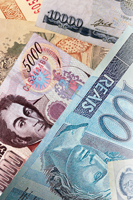
Capital/largest city: Braslia/So Paulo
Population: 200 million
Official language: Portuguese
GDP/GDP per capita: $1.7 billion (2008)/$10,100 (purchasing power parity)
Currency: I real (BRL) = 100 centavos
Time zone: UTC -2 to -4
Dialing code: +55
Principal business areas: So Paulo, Rio de Janeiro, Campinas, Porto Alegre
Brazil is the largest country in the region in terms of area, population, and economy. It is ranked as the worlds 10th largest economy by the International Monetary Fund and the World Bank. Its economy spans agriculture, mining, industry, and technological services as well as a large pool of labor. Brazilian exports are booming, creating a new generation of tycoons. Major export products include aircraft, coffee, automobiles, steel, ethanol, and electrical equipment. Brazil is regarded as one of the four fastest emerging economies alongside Russia, India, and China.
Font size:
Interval:
Bookmark:
Similar books «Doing Business in South America»
Look at similar books to Doing Business in South America. We have selected literature similar in name and meaning in the hope of providing readers with more options to find new, interesting, not yet read works.
Discussion, reviews of the book Doing Business in South America and just readers' own opinions. Leave your comments, write what you think about the work, its meaning or the main characters. Specify what exactly you liked and what you didn't like, and why you think so.

